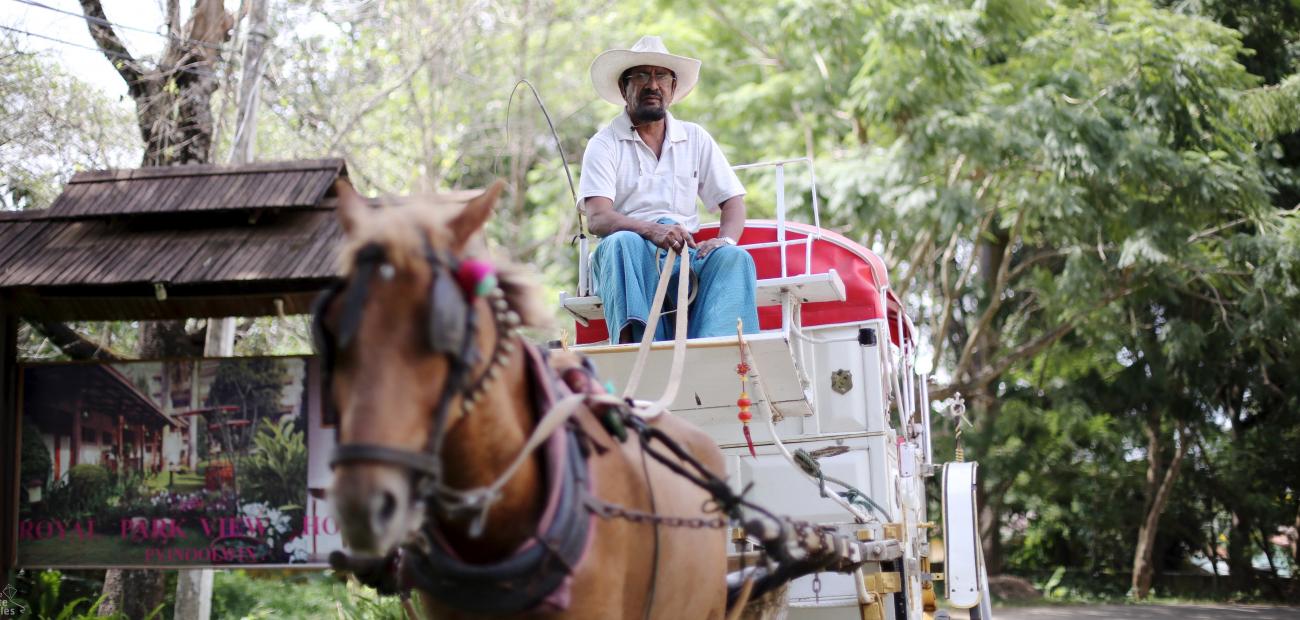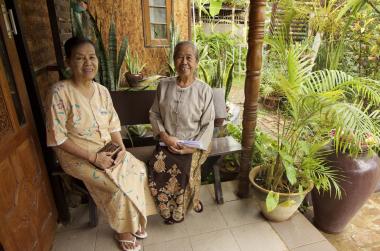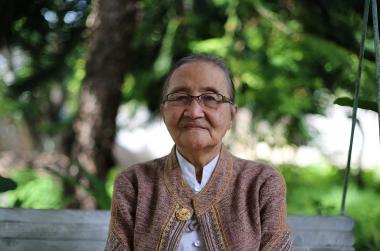We found Barbu perched high on his carriage with an air of quiet expectation, reins in hand, white cowboy hat gleaming in the morning sun.
He is 56 and has been taking passengers around Pyin Oo Lwin since he was a teenager. He can’t imagine another way to earn a living — even though it’s harder and harder to make ends meet.
Barbu’s carriage has a ramshackle fairytale feel as it rattles along the roads, with bells tinkling and the trotting clip-clop of the horse’s hooves. It is decorated with little brass plates in the shape of butterflies and sheriff’s badges and strings of coloured lights add a festive touch at night.
The horse carts date back to the days of British colonial rule, when this temperate hill town was prized by officials escaping the sizzling streets of Mandalay. In fact, many people still call the place Maymyo (meaning May’s town), after Colonel May, the British officer from the 5th Bengal Infantry who was stationed here.
Trotting horses emerging from a cloud of mist was a common image in older movies, songs and literature.
The proliferation of cars and motorcycles made this mode of transport almost obsolete until it found a new lease of life as a tourist attraction. Carriage drivers still face the high costs of looking after their horses, but Barbu is optimistic that they have a future in the town.
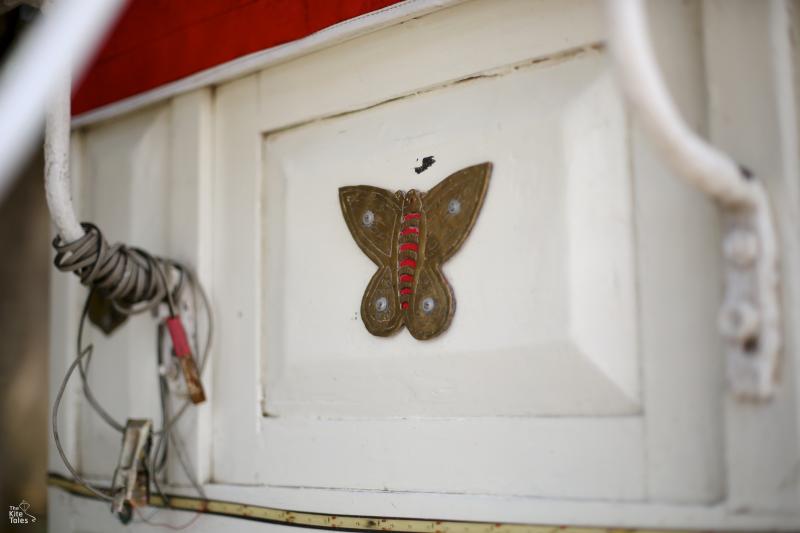
“I’ve been doing this over 40 years. Since people used one kyat notes. Compared to those days, there’s only about a third of the carts left,” he told us, explaining that the horses are expensive to keep.
“There’s a lot to do. You can't overwork it. It's not like a car that you drive whenever. We do two or three trips a day.
“Many carriage drivers suffer during the monsoon. We are busy from October until the end of summer and then it all dies down (when the rains start).
“I originally paid 1,800 kyats (about $1.50 now) for both the horse and cart. Now I’ve been offered two million kyat (about $1,600) just for the cart, but I can’t bear to sell it.
“We only re-did the carriage over a year ago. People like this style. You can take the hood off in the evenings.
“We used to have four or five carriages but sold them because nobody wanted to drive them. This is the only one that we have left.
“I like to drive it when I can. My son does too. He has a motorcycle with a carriage attached at the back (like a tuk-tuk) but there are too many cars now so he’s not doing so well. I think (the horse cart) is the way to go in the future. Tourists will take them.
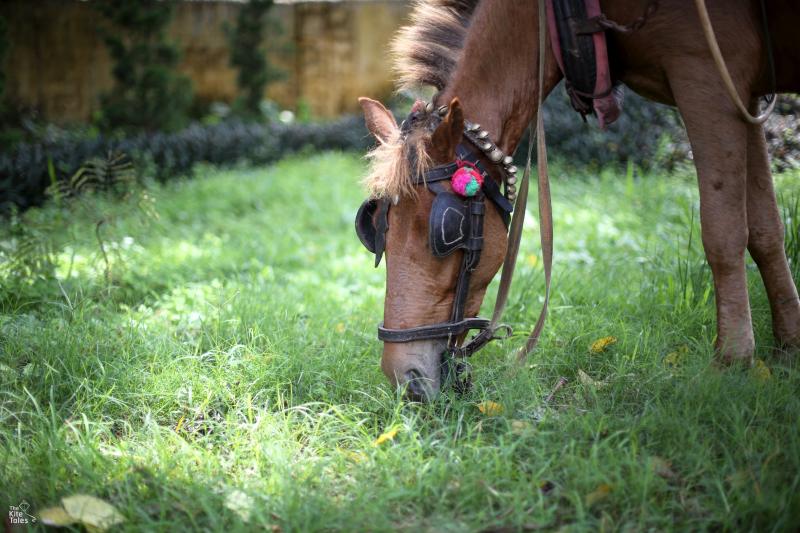
“Maymyo wouldn't be the same without the carts - nowhere else has them.
“I have two horses. This one is two years old. I call him Moe Kyaw. He isn’t very beautiful yet because he’s young and I’ve shaved him. We have to do that because otherwise it’s too hot for them.
“You learn to love the horses. My son wants me to retire, but I can’t live without the horses. I like to have horses and dogs around me. Otherwise, it feels like something is missing.”
(Interviewed October 2016)

